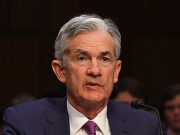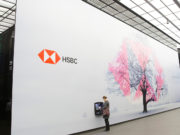7 Myths and Facts about Sustainable Investing
This article is produced by Morningstar, authored by Morningstar Analysts and published on 6th January 2017. Read the original article here.
Sustainable investors DO NOT sacrifice performance for supporting their personal ethics
People worldwide are showing more interest in sustainable investing, so we introduced the Morningstar Sustainability Rating™ for funds. Our ratings serve as the industry’s first global standard for portfolio sustainability based on environmental, social, and governance (or ESG) factors. We’re offering these ratings to help people who want to make sustainability a part of how they choose the funds they invest in.
” People worldwide are showing more interest in sustainable investing “
While there are a handful of terms people use to describe sustainable investing, we’d like to provide some clarity on what’s really involved with our sustainability initiative, while we dispel a few common misconceptions.
Myth #1: Our Sustainability Ratings tell you which funds are “green” based on the environmental records of the companies a fund holds
Our Sustainability Rating isn’t about how “green” a fund is—it’s a broader measure of how well the companies a fund holds are handling important environmental, social, and governance challenges compared to other companies in the same industry. We consider all three types of factors important.
Social factors may include a company’s labour standards or how it treats its employees. Governance covers issues such as how a company pays its executives or what kinds of political contributions it makes.
Myth #2: Sustainable investing is just another fad and not a measurable approach
While there are certainly examples of “greenwashing” in every industry, our Sustainability Ratings are intentionally designed to help you evaluate whether a fund that markets itself as sustainable lives up to its promise. We use a consistent framework developed by our analysts and research leaders to determine a fund’s sustainability. Using this framework, we examine industry-recognized ESG factors, along with our comprehensive data on what investments mutual funds hold in their portfolios, plus company-level ESG information from Sustainalytics.
Sustainable investing is an approach that’s likely to stick around for a long time. There are more than $21.4 trillion in global assets invested sustainably, and 71% of individual investors are interested in the topic. Even the CFA Institute, an investment thought leader, has said that evaluating ESG issues “will likely lead to more-complete investment analyses and better-informed investment decisions.”
” There are more than $21.4 trillion in global assets invested sustainably “
Myth #3: Sustainable investors sacrifice performance for supporting their personal ethics
Research on the performance of sustainable investment strategies, including the traditional exclusionary approach, has found little evidence that this type of investing hurts performance. Most studies show either a neutral or positive effect. By looking at the sustainability of a fund’s holdings, you can identify funds that may offer competitive advantages over the long run because of their focus on companies with positive sustainability practices. At the same time, you can avoid funds with holdings that may present greater risks as a result of unsustainable choices.
Many of the world’s well-recognized companies consider sustainability in their corporate strategies—including Coca-Cola, Apple, BMW, Adidas, and H&M. Though some people invest this way to reflect their values, others see it as a way to find long-term value in the market.
Myth #4: Investors who prioritize sustainable strategies have an extremely limited list of investment choices
With the Morningstar Sustainability Rating, investors who want to consider sustainable strategies within their portfolios now have an expanded universe of funds to choose from. By offering Sustainability Ratings for more than 20,000 funds globally, we’re providing a new lens you can use to evaluate how well the companies held in a fund are managing their ESG risks and opportunities.
Investors no longer have to pick from a small minority of funds marketed based on their focus on sustainable or responsible investing. They can now put their money to work in ways that are meaningful to them or that support a longterm investment strategy by screening for what they consider the best choices from a broad group of funds.
Myth #5: Sustainable investing is a niche activity that isn’t for serious investors
Institutional investors have used sustainability factors in their strategies for years. The sustainable investment market in Europe is worth more than $13 trillion, while U.S. investment in these assets is at $6 trillion and growing as of 2014. Fund flows and demographic shifts indicate that sustainable investing has the potential to grow into a major component of the market, considering the appetites of everyday investors. For example, women, millennials, and Generation X investors have all expressed strong interest in this approach.
Trends seem to point in the direction that sustainable investing could be a way to reach new demographics of investors while addressing changing investor preferences.
Myth #6: A fund needs to have an explicit sustainability strategy in place to receive a high Morningstar Sustainability Rating
We measure all funds the same way – based on the holdings in their portfolios, and not whether a fund calls itself sustainable. While many funds marketed as sustainable do receive high ratings (confirming their objectives), many funds that do not market themselves as sustainable may also receive high ratings.
Myth #7: Fund companies pay to receive a Morningstar Sustainability Rating
We do not accept payments from asset management firms to rate their funds. Like our other ratings for funds and stocks, this rating is 100% independent and determined using our own methodology and company-level ESG data from Sustainalytics. As a result, you can count on us to report on what a fund actually does, not what the fund company says it does.
This article is produced by Morningstar, authored by Morningstar Analysts and published on 6th January 2017. Read the original article here.
Sign Up / Register
Caproasia Users
- Manage $20 million to $3 billion of assets
- Invest $3 million to $300 million
- Advise institutions, billionaires, UHNWs & HNWs
Caproasia Platforms | 11,000 Investors & Advisors
- Caproasia.com
- Caproasia Access
- Caproasia Events
- The Financial Centre | Find Services
- Membership
- Family Office Circle
- Professional Investor Circle
- Investor Relations Network
Monthly Roundtable & Networking
Family Office Programs
The 2025 Investment Day
- March - Hong Kong
- March - Singapore
- July - Hong Kong
- July - Singapore
- Sept- Hong Kong
- Sept - Singapore
- Oct- Hong Kong
- Nov - Singapore
- Visit: The Investment Day | Register: Click here
Caproasia Summits
- The Institutional Investor Summit
- The Investment / Alternatives Summit
- The Private Wealth Summit
- The Family Office Summit
- The CEO & Entrepreneur Summit
- The Capital Markets Summit
- The ESG / Sustainable Investment Summit




























